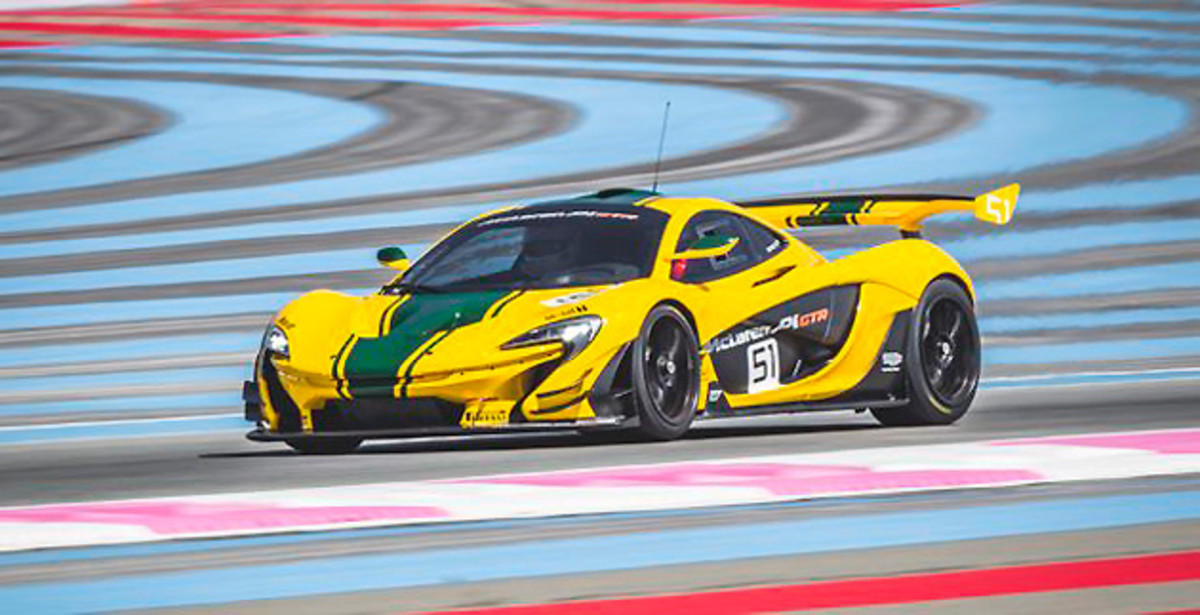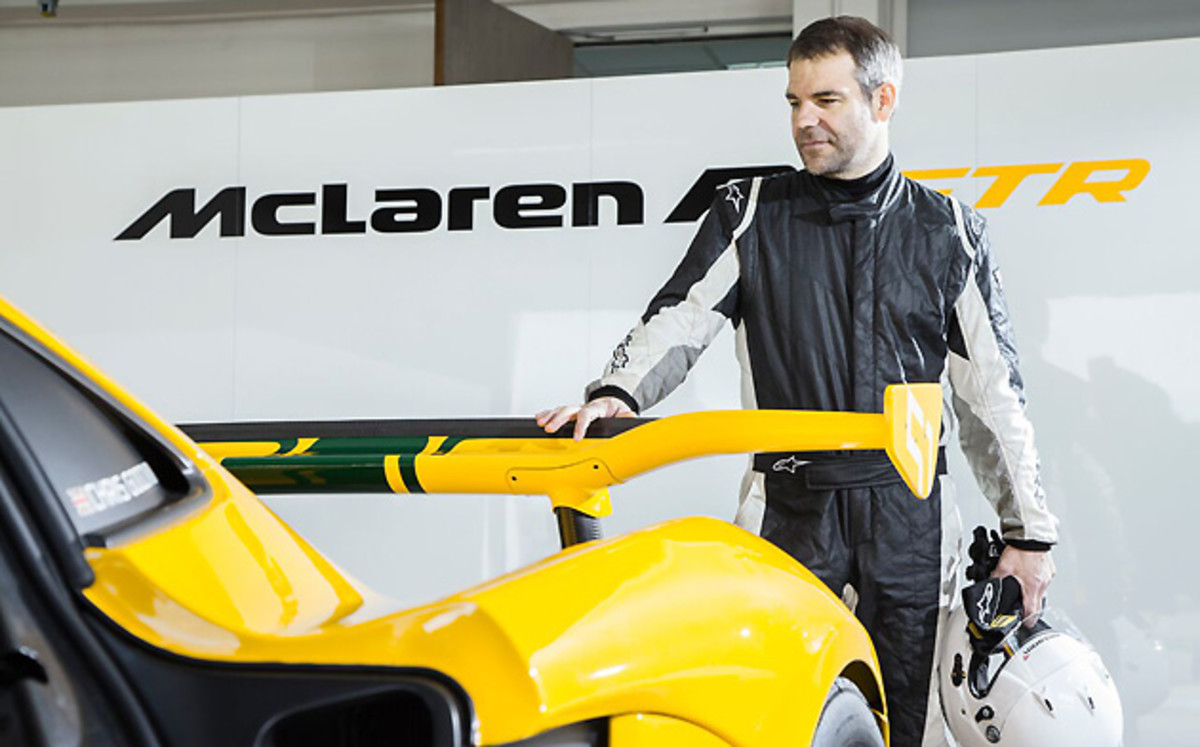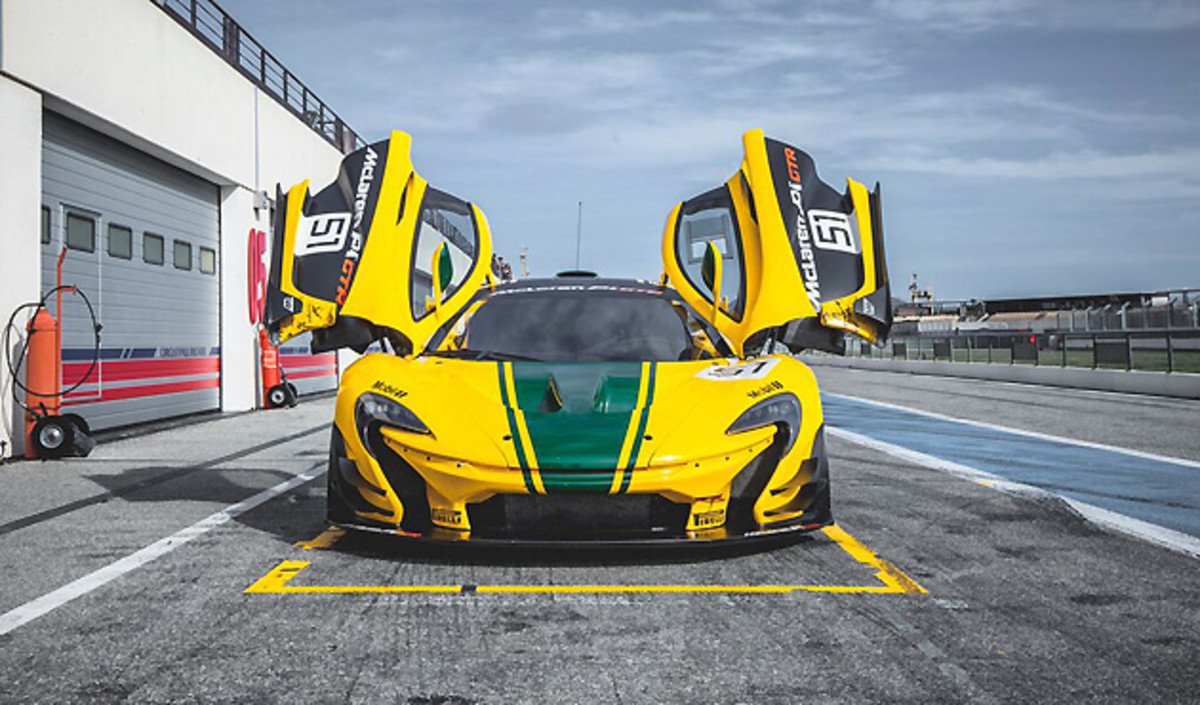Hyper Aware: What it's like to drive the $2.4 million McLaren P1 GTR hypercar

At more than 200 miles per hour, you don’t want to grip the steering wheel too hard. You need to know exactly what the car is doing underneath you, and you need to stay relaxed as possible—and you need to remember exactly where to brake.
I have almost 1,000 horsepower underneath me. I’m rocketing uphill and the car is still speeding up. As I blow up the back straightaway of the Paul Ricard racetrack in southern France, I flick my eyes to the digital speedometer: 325 kilometers per hour. That’s 202 mph.
The McLaren P1 GTR is more than supercar. It is what the industry calls a hypercar, one of the rarest and most powerful vehicles in production in the world. The price: $2.4 million dollars.
People will ask, what do you get for a car that is so wildly expensive? The answer is this experience. The opportunity to drive almost three times more than the 70 mph highway speed limit—even faster than most racecars and most professional racecar drivers—and not soil the fire-retardant undergarments you’re wearing.
My soul may be quaking, but the McLaren P1 GTR is rock solid.
Jet Stet: An SI editor earns his wings with the high-flying Breitling team
I stab the brake, holding it down for a only second or two, and then downshift twice using the left-hand steering-wheel paddle. Blam-blat! The carbon-fiber brakes grind and the twin turbo-charger on the V-8 engine expels a hysterical huff of oxygen. I crest the hill, turn right, skim the curb and then, incredibly, get back on the gas, going around 145 mph now. The car could go far faster, but I’m keen not to wreck the damn thing.
How do you put the P1 in perspective? Let’s back up for a moment. There are sports car like the Porsche 911, which average around $100,000. And then there are supercars like the Ferrari F12, which start at some $320,000. But then there are hypercars, ultra-rare specimens that are vastly more expensive, exclusive and high-powered than regular old supercars. Examples include the $1.5 million Ferrari LaFerrari and the McLaren P1, both of which have long since sold out.
The P1GTR is based on the P1, and it is not yet sold out. But only 40 will be sold globally, and to be on the list, you already have to own the $1-million-plus P1.

Since it is priced in sterling, the base is officially 1.55 million pounds. Buyers can also opt for a package plan, which includes shipping the car around the world for exclusive racetrack events, mechanical support and consumables like tires. McLaren staff will even help train you, both physically and experientially, so you get the most of your P1 GTR. For that you’d have to ante up 1.98 million pounds, or around $3 million.
Strictly speaking, the P1 GTR is not street legal. If the regular P1 is king of the road, the P1 GTR is designed to dominate the racetrack. The body was reworked to make it even more aerodynamic—as if you could miss the massive fixed rear wing—and the nose nearly grazes the ground. It has a five-point safety harness rather than a normal seat belt or airbags. The car’s carbon-fiber cell makes it safe, even at super-legal speeds.
Open the door, which flips upward and forward in a truly exotic fashion, and you’ll find an interior that looks less like a luxury cocoon and more like a spaceship. The tiny steering wheel has two handles on either side and some dozen buttons on the front. How complicated is it? You’ll need a McLaren representative to walk you through the process of getting it started.
The P1 is also a hybrid. A twin-turbo V-8 is mounted in the center of the car behind the driver, working in conjunction with an electric motor and lithium-ion battery pack. The electric motor gives extra power from the moment you step on the accelerator. When the systems are working in tandem, the car makes 986 horsepower and 738 pound-feet of torque. (For those keeping count, a normal Honda Civic has 143 hp and a Porsche 911 Carrera produces 350 hp.)
That’s a ludicrous amount of power, and I had to wonder: Could most owners actually handle this thing? Could I?
At the invitation of McLaren, I arrived at the Paul Ricard racetrack, the site of the French Grand Prix in the 1970s and 1980s. Almost nobody outside of the company had driven the P1 GTR, and I was only the second journalist in the world to do so. Various engineers and test drivers were still tweaking the suspension setup.

I’ve driven all manner of cars, including a few more powerful than the McLaren. But rarely have I seen or experienced a piece of engineering so singularly focused on speed and handling. The P1 GTR is gorgeous in the same way a big jungle cat is beautiful. Everything is functional and pared down and, well, dangerous.
Many genuine racecars have neither ABS brakes nor traction or stability control. The P1 GTR has these aids, and even a very powerful air conditioner. It straddles the worlds of super sports cars and racecars, embracing the best elements of each.
McLaren knows a thing or two about racecars. McLaren Automotive, the UK-based company that produces road-legal cars has only been around for several years. But it’s an offshoot of the McLaren Group, which has a long and winning tradition in Formula 1. Many car companies claim that their racing technology trickles down to their road cars. When it comes to McLaren, this is actually true.
When I was given the thumbs-up out to head out to the track, the car glided smoothly out of the pits, loud, but not piercingly so. I was belted in, tight, as if glued to the seat. I was also wearing a full fire-resistant driving suit and full-face helmet. The McLaren is not something to take lightly.
Hence on my first lap I took it easy, trying to get a sense of the power and handling and ... wait, I’d just gone more than 180 mph on back straightaway. The initial acceleration was savage, garnering energy from both the V-8 and the electrical motor, but then the car seemed to quiet, slipstreaming through the air, hurtling along easily.
Formula E's season-ending race a victory lap for the sport, creator
So now I’m trying to pick up the pace in the corners, maintaining speed even in the slower parts of the track. The aerodynamic pieces of the car push it into the asphalt, gluing you to the surface—but only if you go fast enough for the effect to take place.
And then I screw up. I come in too fast, too hard, around a downhill turn and I’m out of position. I run wide over the curb and directly toward a pylon. I hammer the brake and yank the wheel and the car slows and pivots. That’s the traction and stability controls kicking in, electronically sensing that things are not right, and they brake an individual tire and guide me out of trouble.
I exhale. If I’d been in a real racecar, I’d have spun—and hit that pylon. I complete the lap and slowly roll back to the pits, appreciating the hell out of this car.
Because that’s what $2.4 million really buys you—that extra breathing room, the smarter-than-you electronics and the superb engineering to allow the car to make up for your lack of talent. You may not be a professional racecar driver, but the car makes you look like one.

